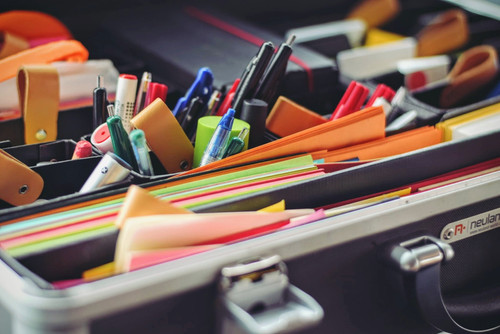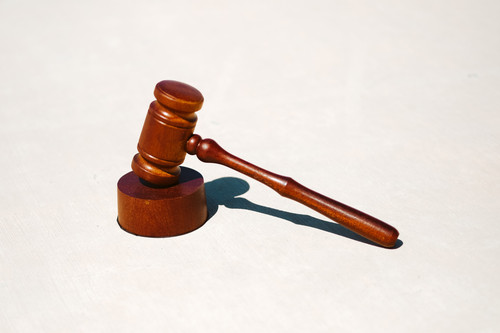What Can You Store in a Storage Unit? A Complete 2026 Guide
Decipher what you can store in a storage unit and how best to do so. Find out how to maximise your storage space and keep your belongings safe and secure.

Have you ever wondered what you can store in a storage unit?
Maybe you’re moving to a smaller place and need to put some stuff on ice for a while. Or you own a collection that’s gotten out of hand and need to give it its own space.
Storage units aren’t just for the random boxes of junk you don’t use anymore. When you use a storage unit correctly and efficiently, you can store most items in them. Read on to understand what you can store in a storage unit.
Table of Contents:
- What Can You Legally Store in a Storage Unit?
- 5 Tips for Efficiently Utilising Space in Your Storage Unit
- 5 Household Items to Store in a Storage Unit
- 6 Tips for Safely Storing Electronics and Media
- 5 Guidelines for Storing Hazardous Materials
Download the ultimate Self Storage e-book
Everything you need to know about setting up your self-storage facility.
What Can You Legally Store in a Storage Unit?
So you’ve decided to rent a storage unit — great idea!
But before you start hauling boxes, you’ll want to make sure you know some legal storage requirements.
Legally, you can store most standard household goods and personal belongings in a storage unit, including the following:
- Furniture: Couches, chairs, tables, dressers, mattresses, etc. Pretty much any furniture you have in your home.
- Clothing and linens: Winter coats, suits, dresses, towels, bedding, etc.
- Kitchenware: Plates, cups, pots and pans, small appliances, and pantry staples. Non-perishable foods only!
- Decor and knickknacks: Artwork, books, photos, collectables, and various knickknacks.
- Sporting goods: Bikes, skis, kayaks, camping gear, golf clubs, and other recreational equipment.
- Office supplies: Desks, file cabinets, documents, electronics, and office decor.

However, certain items are illegal, dangerous or prohibited to store in a unit, and they include the following:
- Perishable foods, flammables, combustibles or hazardous materials: No gasoline, paints, or anything explosive.
- Live plants or animals: Sorry, you can’t use a storage unit as a greenhouse or kennel.
- Illegal drugs or stolen goods: Storage units are prohibited from housing items obtained by theft, as well as hard drugs.
- Waste or trash: Units must be used to store usable goods only.
- Toxic materials: No storing dangerous chemicals, pollutants or contaminated items.
Storing only ideal storage items will keep your unit safe, legal, and reasonably standing. Now, start planning how to organise your worldly possessions in your new storage space! Let the packing begin.
5 Tips for Efficiently Utilising Space in Your Storage Unit

But where do you begin?
The key is making the most of your space to fit in everything you need.
Here are five efficient space utilisation techniques:
1. Use furniture sliders and stack when possible.
2. Pack efficiently and label well.
3. Use vertical space.
4. Group categories together.
5. Leave an aisle for access.
1. Use Furniture Sliders and Stack When Possible.
Invest in furniture sliders, pads, or coasters and slide furniture together to maximise floor space. Stack chairs, tables, and other items on top of each other securely. Just be sure not to overload the top.
2. Pack Efficiently and Label Well.
Use smaller boxes for heavy items and larger boxes for lighter items. Pack boxes tightly so items don’t shift around. Clearly label each box on multiple sides with its contents and the room it belongs to. This makes it easy to stack boxes together and find what you need later.
3. Use Vertical Space.
Install wall mounts, racks, shelves, and cabinets to store items up and off the floor. Bikes, lawn tools, cabinets, and shelves can all be wall-mounted. Get creative with vertical storage solutions.
4. Group Categories Together.
Store similar items together, like all kitchen boxes in one area, bedroom furniture in another, etc. This makes your unit easier to navigate and items quicker to find when needed.
5. Leave an Aisle for Access.
As you pack your unit, leave enough space to walk down the centre and access all areas. Aisles should be at least 2 to 3 feet wide. You want to be able to get to your belongings quickly without having to move other boxes and furniture around constantly.
These valuable tips/rules for storing items will help you make the most of your storage space. Staying organised and maximising efficiency in your unit will make accessing your belongings a breeze when you need them — just like how Storeganises’ self storage software is essential to effectively operating a self storage business.
5 Household Items to Store in a Storage Unit
Certain household items are among the most common items kept in storage units.
If you’re preparing for a move or need to clear out valuable space in your home, consider these five storage unit essentials:
1. Furniture
2. Seasonal decorations
3. Out-of-season clothing
4. Kitchenware
5. Recreational equipment

1. Furniture
Are extra furniture items like tables, chairs, dressers or mattresses occupying space in your home?
Storing furniture in a storage unit is an easy solution.
Be sure to wrap tables, dressers and other wood furniture in moving blankets or bubble wrap to prevent scratching. Mattresses should also be wrapped to keep them clean.
2. Seasonal Decorations
Storing seasonal decorations like holiday lights, ornaments, wreaths, etc., in a storage unit will free up your attic or garage space and protect items from weather damage. When using seasonal storage solutions, clearly label and organise boxes by season or holiday to make retrieval quick and easy.
3. Out-of-Season Clothing
Rotate your wardrobe efficiently by storing out-of-season clothing like winter coats, boots, swimsuits, etc., in a storage unit. Use breathable storage boxes or bags and label them by item type and size to keep your storage unit organised. This also prevents clutter buildup in your home closets.
4. Kitchenware
Do you have extra kitchen tools, appliances or dinnerware you use occasionally?
Storing rarely-used items in a storage unit frees up valuable kitchen cabinet space.
Be sure to securely wrap glassware, plates and other fragile items before storing them to prevent breakage.
5. Recreational Equipment
Kayaks, bikes, camping gear and other recreational equipment can occupy a lot of space in a garage or shed. Storing these oversized items in a storage unit, especially in the off-season, helps declutter your home. Look for a unit with drive-up access for easier loading and unloading of larger gear.
Storing household goods in a storage unit helps maximise living space in your home. Carefully packing and organising items before storing them will make them easy to retrieve when needed. With the proper storage solution, you’ll gain valuable space without sacrificing the things you need.
6 Tips for Safely Storing Electronics and Media
Storing your electronics and media like computers, TVs, stereos, DVDs, and CDs requires extra consideration. These are maintenance-intensive items sensitive to extreme temperatures and humidity, so a climate-controlled storage unit is best.
Here are six appliance storage tips to stick to:
1. Keep items in their original packaging.
2. Use sturdy boxes.
3. Include desiccants.
4. Keep boxes elevated.
5. Maintain moderate temperatures.
6. Consider extra insurance.
1. Keep Items in Their Original Packaging.
Keep electronics and media in their original boxes, packaging, and anti-static bags if possible. This provides the most protection from dust and the elements. If you no longer have the original packaging, wrap items individually in anti-static bags or bubble wrap before boxing them up.
2. Use Sturdy Boxes.
For maximum protection, adhere to storage packing tips like double-boxing heavier items like TVs, stereos, and computer monitors. Place them in a snug-fitting inner box with padding like foam, bubble wrap or packing peanuts. Then, place that box inside a larger outer box with padding. Clearly label each box with its contents and any handling instructions.
3. Include Desiccants.
Throw some desiccants, like silica gel packets, in with your electronics. These provide moisture control in storage and prevent condensation from building up inside the boxes. Replace the desiccants every few months to keep them effective.
4. Keep Boxes Elevated.
Store boxes containing electronics up off the floor in case of flooding. Place them on wooden pallets, shelves, or plastic crates. This also makes the boxes easier to move around when needed.
5. Maintain Moderate Temperatures.
Ask your storage facility if they have climate considerations for electronics to allow for moderation of temperatures for sensitive items. Extreme heat or cold can damage electronics over time. A temperature between 50 to 80 F is ideal for most consumer electronics and media and other sensitive item storage.
6. Consider Extra Insurance.
For valuable collections, you may want to purchase additional insurance to cover possible damage or loss. Check with homeowners or renters insurance to add a rider or explore standalone collectable policies.

Storing your electronics and media properly in a climate-controlled storage unit will help keep them in working condition until you’re ready to use them again. Take the necessary precautions upfront to avoid damaging or losing your sensitive items.
Tips for Storing Outdoor Equipment, Tools and More
Storing larger outdoor equipment, tools, and recreational items in secure storage options is common. Extra space for these bigger, bulkier things can free up room in your garage or shed.
Here are tips for storing these items:
1. Lawn and Garden Tools
Do you find yourself accumulating an array of rakes, shovels, hoses, and other gardening tools with each passing season?
A well-organised storage unit can be the perfect solution for storing all your lawn and garden equipment when not actively used.
Before storing, it’s crucial to clean each tool to remove any residual dirt, plant material, or potential pests. Thorough cleaning not only ensures a clean storage unit but also extends the lifespan of your tools. Maintaining your tools is also a wise practice, taking care of any necessary repairs before storing them away. This way, you’ll have them ready to go when the next gardening season rolls around, saving you time and effort.
In essence, a clean, well-organised storage unit can help you keep your garden tools in top-notch condition, making your gardening ventures more efficient and enjoyable.
2. Outdoor Furniture
Outdoor furniture, including patio sets, grills, decorations, and accessories, can take up a lot of space when not in use, especially during the winter months. A storage unit provides a safe and convenient option for protecting these items from the elements and keeping them in good condition.
To optimise space, stack chairs and collapse umbrellas. Cover cushions and pillows with waterproof covers or bags to protect them from dampness and potential mould growth.
For grills, ensure they’re fully cool before cleaning them thoroughly. Remove any grease or residue to avoid unpleasant smells and attracting pests. After cleaning, cover the grill to prevent dust accumulation and potential damage.
By taking these steps, you can maximise your storage space and ensure your outdoor furniture and accessories are ready for use when the next season arrives. Proper storage will prolong the lifespan of these items, offering you greater enjoyment and value for your investment.
3. Recreational Equipment
As an outdoor enthusiast, you might have an assortment of gear for activities like cycling, camping, or boating that isn’t in constant use. A storage unit can be an ideal space to keep these items, including larger mobility devices like kayaks, canoes, jet skis, or dirt bikes. Smaller equipment, such as tents, sleeping bags, backpacks, and other camping supplies, can also be safely stored away during the off-season.
Before storing your sports gear and recreational equipment, it’s essential to clean and dry every item thoroughly. This preventive measure will protect your gear from any potential damage caused by moisture or dirt. Packing items in totes or bags after cleaning will provide an extra layer of protection, keeping out dust and helping to maintain the quality and longevity of your equipment.
By following these steps, you can ensure that your equipment stays in great condition, ready for your next adventure when the season rolls around. More particularly, proper storage can extend the life of your gear, saving you from costly replacements and letting you enjoy your outdoor hobbies to the fullest.
4. Tools and Building Supplies
For contractors, builders, and avid DIY enthusiasts, a storage unit can serve as a practical remote workspace to house tools, lumber, and other essential materials. Grouping similar items together on pallets can streamline access and make inventory management easier.
However, it’s important to remember that storage facilities often restrict what can be stored. Items that are flammable, toxic, or perishable may not be permitted due to safety concerns.
To ensure the safety of your stored items, consider locking up your tools and possibly installing a fence around the unit. Check with your storage provider to see if they utilise self storage software. This technology helps facilitate easy monitoring and tracking of storage units and their contents, adding an extra layer of security.
This not only helps you keep track of your inventory but also provides peace of mind, knowing that your storage provider is actively implementing security solutions to maintain the safety and security of your items. A well-organised and secure storage unit can greatly enhance your work efficiency and safeguard your valuable equipment and materials.
As with any storage, be sure to visit your unit regularly to check on the condition of items and ensure everything remains well-organised. Keeping outdoor equipment, tools, and recreational gear in a separate storage space will make your garage and home feel more spacious while keeping the essential things you need close.
5 Guidelines for Storing Hazardous Materials
There are some crucial guidelines to remember when storing hazardous materials in a storage unit. Following these best practices for storage will ensure the safety of you, your belongings, and anyone else accessing the storage facility.
1. Properly contain materials.
2. Ensure ventilation and climate control.
3. Separate incompatible materials.
4. Limit access.
5. Follow all laws and regulations.
1. Properly Contain Materials.
Ensure any hazardous materials are properly sealed and contained before bringing them into your storage unit.
Use heavy-duty plastic or metal containers specifically designed for the materials in question. Label each container clearly with its contents and any hazards. This helps ensure nothing leaks or spills and allows anyone to handle the materials in an emergency properly.
2. Ensure Ventilation and Climate Control.
Hazardous materials—if allowed to be stored—should be kept in a well-ventilated storage unit; some may require climate control. Volatile or flammable substances, in particular, need plenty of airflow to prevent buildup of fumes.
Temperature-sensitive materials must also be stored in a unit with heating and cooling to maintain a consistent temperature. Check the requirements for your specific materials and choose a storage unit that can adequately accommodate them.
3. Separate Incompatible Materials.
Keep incompatible hazardous materials well separated in your storage unit. Materials that could react with each other in dangerous ways need their dedicated areas. For example, keep flammable and oxidising materials on opposite sides of the unit.
Acids and bases should also be separated. Pack like materials together and label storage areas clearly.
4. Limit Access.
Enforce storage security measures, especially if your unit contains hazardous materials. Only authorised individuals should have access to the unit. Let your storage facility know about any hazardous contents in case of emergency — they may have additional policies or restrictions for storing these types of materials.
5. Follow All Laws and Regulations.
Ensure you understand and comply with all laws and regulations regarding storing and handling any hazardous materials you need to keep in a storage unit. Requirements vary at the local, state and federal levels. You’re responsible for properly storing and declaring any hazardous materials to avoid legal trouble and ensure safety. When in doubt, check with authorities on correctly storing your specific materials.

Better to be safe than sorry. Following these storage safety guidelines will give you peace of mind that your hazardous materials are properly stored and secured in your storage unit. Take the necessary precautions to protect what’s important to you.
If you’re a storage business owner, you’ll also want to utilise our self storage software to properly manage your units and ensure all safety precautions for you and your customers. It’s also important to have a self storage maintenance checklist that you go through periodically.
Closing Remarks
So far, we’ve provided a comprehensive list of what you can store in a storage unit and how to go about their storage. Whether you need extra space for seasonal decorations, recreational gear, documents, or a place to store the overflow from your home or business, storage units offer you a luxury of space.
If you have any other questions about what you can store in a storage unit, check with the storage facility. They can advise you on their specific policies and any restrictions on the types of items they allow. And if you want to cash in on this ever-growing industry, you can check out this guide on starting your own storage facility. Plus, our self storage software makes managing your business a breeze — contact us today to learn more or sign up here!
What Can You Store in a Storage Unit FAQs
What Is the Purpose of a Storage Unit?
Storage units provide a secure space to store your belongings when you have limited space. You can use them to store seasonal items, extra furniture, documents, recreational vehicles, or anything you need to keep but don’t have room for.
How Do I Choose the Right Size Storage Unit for My Needs?
Consider how much space your items will take up, and choose a unit at least 1.5 times that size. Getting a unit that’s too big rather than too small is better. Measure furniture and boxes to determine the square footage you need. Most facilities offer small (5x5), medium (5x10), large (10x10) and extra-large (10x15 or larger) units.
Can I Store My Vehicle in a Storage Unit?
Yes, many storage facilities offer enclosed garages or open parking spaces to store vehicles, RVs, boats and trailers. Key vehicle storage preparation tips include ensuring the unit has drive-up access, high ceilings and no narrow doorways. You’ll also want to choose a climate-controlled unit to protect from weather damage.
Is It Safe To Store Electronics in a Storage Unit?
Yes, electronics like TVs, stereos and computers can generally be stored in a climate-controlled storage unit. However, storage units aren’t entirely dust-free, and temperature fluctuations can still occur, which may damage sensitive electronics over long periods. Packaging electronics in protective cases with padding and desiccants to absorb moisture is best. For the most valuable or fragile items, consider keeping them in a small unit with more stable conditions.
